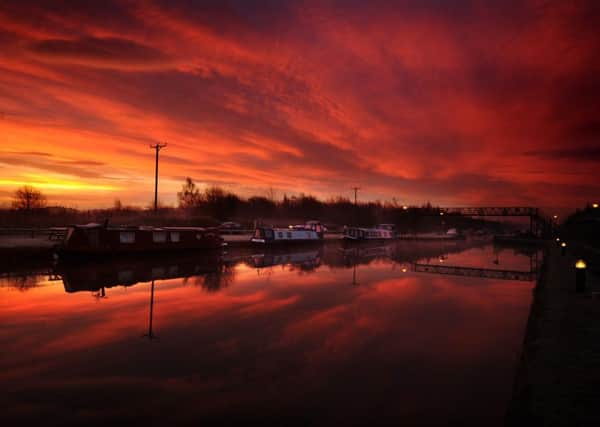'˜Inland port' could bring vital freight into Leeds by canal and take 200,000 tonnes of traffic off the roads


The new wharf facility proposed in the Stourton area would allow non-perishable freight such as aggregates, timber, oil and steel to be moved from the Humber estuary via the Aire and Calder Navigation, the canal sections of the Rivers Aire and Calder.
The development on three acres of land owned by the Canal and River Trust would include a concrete apron with 80 metres of thick boards known as ‘sheet piling’ for boats to moor against, as well as dredging of the waterway to make it easier to navigate.
Advertisement
Hide AdAdvertisement
Hide AdThe trust, which is behind the project, aims to complete the construction 18 months from funding being formally awarded and move 200,000 tonnes of freight from road to water in the first year.
By doing so, officials hope carbon emissions from road vehicles will be cut by 100 tonnes within three years and create as many as 16 jobs.
The project has outline planning permission, but this expired in April so the trust hopes to submit another application next month, in the hope that it will approved by Leeds City Council by October.
The West Yorkshire Combined Authority has agreed to move the scheme forward, meaning an outline business case, and provide £3.17m in funding once a costed full business case has been prepared. The Canal and Rivers Trust are providing match funding of £200,000.
Advertisement
Hide AdAdvertisement
Hide AdAmong the high profile schemes that the project could help are the much-anticipated revitalisation of the Leeds South Bank, the new station for the city required for the HS2 rail line and the regeneration of Hunslet Riverside.
It would also help improve transport connections between East and West in northern England, one of the main issues identified by transport chiefs as holding the region back.
According to a report by the authority, water-borne freight “has been in decline since the proliferation of motorways, which quickly became a more commercially viable opportunity for freight carriers”.
It said: “Due to increased congestion, however, freight on water is again becoming an attractive proposition for certain goods.
Advertisement
Hide AdAdvertisement
Hide Ad“The Canal & River Trust has undertaken a strategic review of its commercial waterways, and has concluded that the Aire & Calder Navigation, which flows from the Humber Estuary into the City of Leeds should be its priority waterway for development as a freight route once again.
“There are already wharf facilities on the Aire & Calder Navigation that are already in use, but the Trust’s ambition is to bring freight back into Leeds city centre.
“Work completed to date by the Canal & River Trust and Transport for the North has revealed that there is a demand to move cargoes such as aggregates, timber, oil, and steel by water. Delivering a fit for purpose wharf in Leeds could make this a reality.
“Given the pressures that Leeds City Region is currently facing around traffic congestion and air quality, the use of waterborne freight could bring both commercial, environmental and health benefits.”